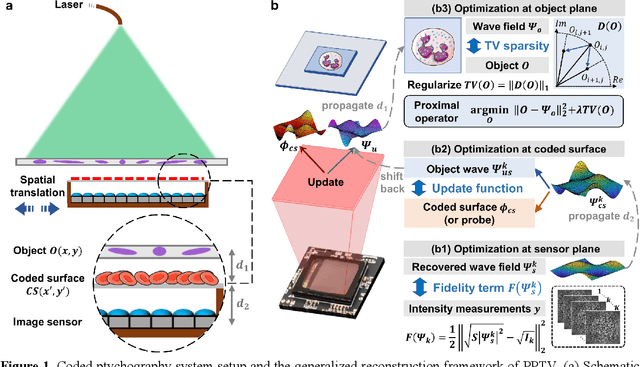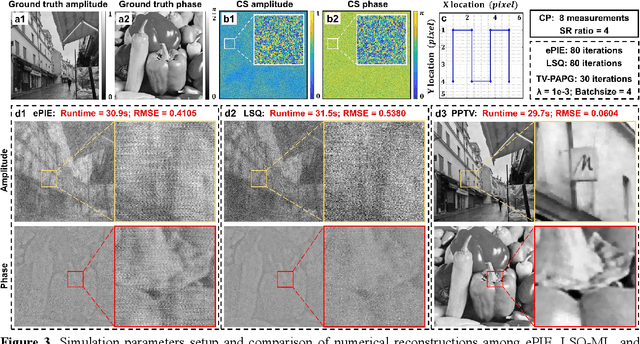Ninghe Liu
Ptychographic non-line-of-sight imaging for depth-resolved visualization of hidden objects
May 17, 2024



Abstract:Non-line-of-sight (NLOS) imaging enables the visualization of objects hidden from direct view, with applications in surveillance, remote sensing, and light detection and ranging. Here, we introduce a NLOS imaging technique termed ptychographic NLOS (pNLOS), which leverages coded ptychography for depth-resolved imaging of obscured objects. Our approach involves scanning a laser spot on a wall to illuminate the hidden objects in an obscured region. The reflected wavefields from these objects then travel back to the wall, get modulated by the wall's complex-valued profile, and the resulting diffraction patterns are captured by a camera. By modulating the object wavefields, the wall surface serves the role of the coded layer as in coded ptychography. As we scan the laser spot to different positions, the reflected object wavefields on the wall translate accordingly, with the shifts varying for objects at different depths. This translational diversity enables the acquisition of a set of modulated diffraction patterns referred to as a ptychogram. By processing the ptychogram, we recover both the objects at different depths and the modulation profile of the wall surface. Experimental results demonstrate high-resolution, high-fidelity imaging of hidden objects, showcasing the potential of pNLOS for depth-aware vision beyond the direct line of sight.
Sparsity-regularized coded ptychography for robust and efficient lensless microscopy on a chip
Sep 24, 2023



Abstract:In ptychographic imaging, the trade-off between the number of acquisitions and the resultant imaging quality presents a complex optimization problem. Increasing the number of acquisitions typically yields reconstructions with higher spatial resolution and finer details. Conversely, a reduction in measurement frequency often compromises the quality of the reconstructed images, manifesting as increased noise and coarser details. To address this challenge, we employ sparsity priors to reformulate the ptychographic reconstruction task as a total variation regularized optimization problem. We introduce a new computational framework, termed the ptychographic proximal total-variation (PPTV) solver, designed to integrate into existing ptychography settings without necessitating hardware modifications. Through comprehensive numerical simulations, we validate that PPTV-driven coded ptychography is capable of producing highly accurate reconstructions with a minimal set of eight intensity measurements. Convergence analysis further substantiates the robustness, stability, and computational feasibility of the proposed PPTV algorithm. Experimental results obtained from optical setups unequivocally demonstrate that the PPTV algorithm facilitates high-throughput, high-resolution imaging while significantly reducing the measurement burden. These findings indicate that the PPTV algorithm has the potential to substantially mitigate the resource-intensive requirements traditionally associated with high-quality ptychographic imaging, thereby offering a pathway toward the development of more compact and efficient ptychographic microscopy systems.
 Add to Chrome
Add to Chrome Add to Firefox
Add to Firefox Add to Edge
Add to Edge